A wireless weather station is a weather station that usually consists of a thermometer for measuring temperature, a barometer for measuring air pressure, and a hygrometer for measuring humidity. The weather data measured outdoors is transmitted from the outdoor transmitter to the base station via radio.
Would you like to see for yourself what the weather is going to be like today, tomorrow, or in the next few days? With a modern wireless weather station, you will know the weather forecast at your individual location. For more information, we recommend our guide to wireless weather stations.
Do you want to buy a radio weather station from TFA? At our online retailers, you will find out where you can buy them.
Buy Weather Stations with Outdoor Transmitter
Wireless weather station guide
You want to learn more about wireless weather stations? First of all, we will explain to you what components these weather stations consist of. In addition, you will learn how a wireless weather station works and how to properly install and set up the device.
Components of the wireless weather station
The wireless weather station consists of
- a main or base station and
- at least one outdoor transmitter, which transmits the weather data by radio
Base station of the wireless weather station
The base station measures indoor data using integrated electronic sensors. These are for example:
- Air pressure
- Temperature
- Humidity
On the central display all weather data are combined which are measured by the station itself and by the outdoor transmitter. On the display of the main station, you can see the indoor and outdoor temperature display.
In addition, the weather forecast is displayed with an icon. Whether sun, clouds or raindrops are displayed, the wireless weather station calculates based on the air pressure changes measured by the integrated electronic barometer.
Depending on the model, the air pressure values are also displayed. You can observe their temporal course on a bar chart.
Weather station outdoor transmitter
Outdoor weather data is obtained from radio transmitters placed in a protected place. In the basic version, the outdoor transmitter is equipped with a temperature sensor for measuring the outdoor temperature. Often, the outdoor sensor also contains a humidity sensor.
 How does a weather station with an outdoor transmitter work?
How does a weather station with an outdoor transmitter work?
The outdoor transmitters transmit the data to the main station via
radio. The transmission frequency is either 433 or 868 megahertz. The data from the transmitters are shown on the display of the base station.
Many wireless weather stations are capable of receiving multiple outdoor transmitters. This function can then be used to monitor the temperature and humidity in other rooms. In some models, several transmitters are included in the scope of delivery.
Professional or complete weather stations also have an anemometer to determine wind speed and wind direction and a rain gauge to determine precipitation amounts.
The radio weather station often offers further information and functions:
- The storage of maximum and minimum values, trend arrows and the setting of alarms, for example, for frost.
- An integrated radio clock provides a reliable time on the display, often supplemented by the date and day of the week.
- An alarm with snooze function lets you start the day well.
Advantages and disadvantages of the wireless weather station
Wireless weather stations are modern electronic weather stations. To weigh the advantages and disadvantages of the wireless weather station helps a comparison with special wireless weather stations and analog models.
Wi-Fi weather stations are special wireless weather stations, whose range of functions – per model – is the same. However, devices with Wi-Fi allow you to conveniently get information about the data via your smartphone or tablet even when you are on the go.
Satellite-based WETTERdirekt stations are also wireless weather stations that provide multi-day forecasts using the WETTERdirekt technology which is only available in Germany. The data comes from professional meteorologists and is transmitted several times a day by satellite via a special radio network.
In comparison, analogue weather stations are stationary measuring devices with mechanical components. The display is analogue, usually on a round scale. Classically, these weather stations consist of a thermometer, a hygrometer, and a barometer.
The following is a comparison of the advantages and disadvantages of the wireless weather station:
| Advantages | Disadvantages | |
|---|---|---|
| unlike analogue stations |
|
|
| unlike satellite-based stations |
|
|
Optimal location for a weather station with an outdoor transmitter
For the outdoor transmitter(s) choose a shady place, protected from rain. To measure the outdoor temperature correctly, avoid direct sunlight. Do not attach the outdoor sensor directly to the facade of the house. The heat radiation of the facade can otherwise falsify the measurement results.
Tip: Ensure a stable wireless connection from the outdoor transmitter to the base unit indoors. Observe the range of the transmitter as well as a free area between the base station and the radio sensors.
The ideal installation location for the base station indoors should be well ventilated. Avoid the vicinity of heat sources such as fireplaces and radiators or an air conditioner. To obtain the most accurate indoor temperature value, the station should not be exposed to direct sunlight.
Since the base station clearly displays all weather data, we recommend that you place it in a central and easily accessible room. This could be in the living room, hallway or bedroom, for example.
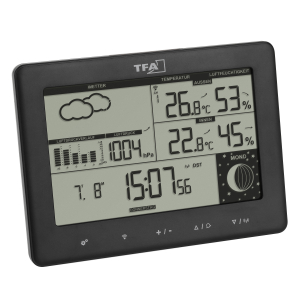
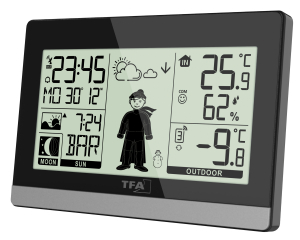
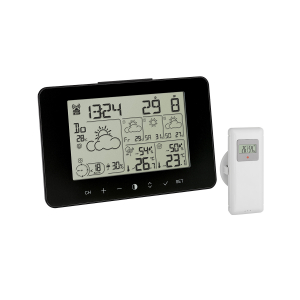
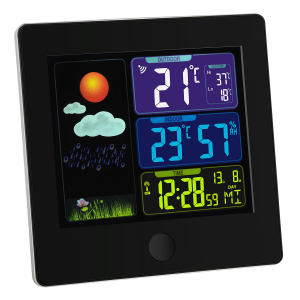
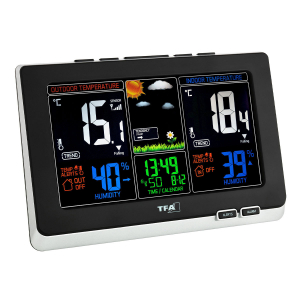
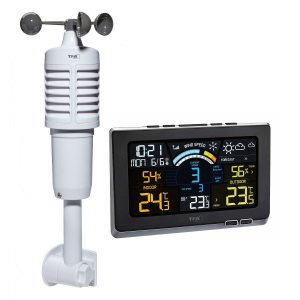
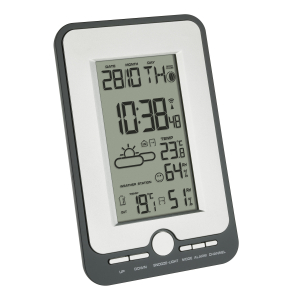
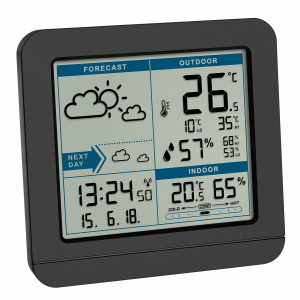
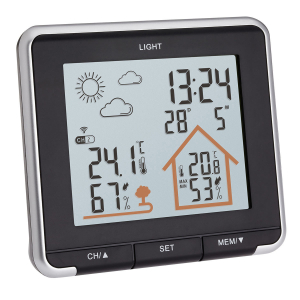
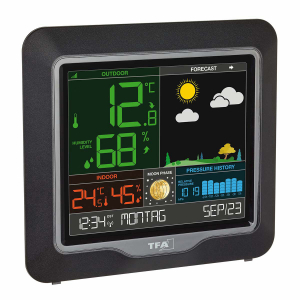
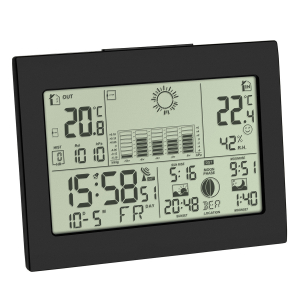
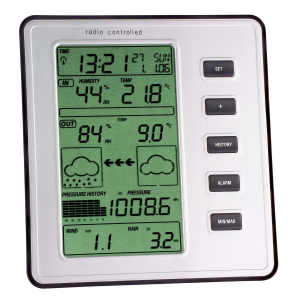
 How does a weather station with an outdoor transmitter work?
How does a weather station with an outdoor transmitter work?